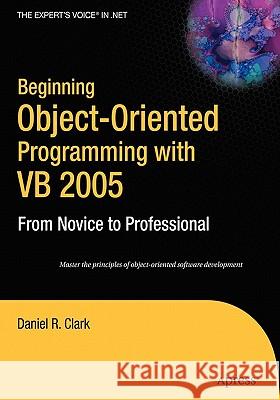Beginning Object-Oriented Programming with VB 2005: From Novice to Professional » książka
Beginning Object-Oriented Programming with VB 2005: From Novice to Professional
ISBN-13: 9781590595763 / Angielski / Miękka / 2005 / 384 str.
As you work your way through An Introduction to Object-Oriented Programming with Visual Basic .NET, you'll learn how to analyze the business requirements of an application, model the objects and relationships involved in the solution design, and, finally, implement the solution using Visual Basic .NET. Along the way you'll also learn the fundamentals of software design, the Unified Modeling Language, object-oriented programming, and Visual Basic .NET. An Introduction to Object-Oriented Programming with Visual Basic .NET is logically organized into three parts. Part One delves into object-oriented programming methodology and design--concepts that transcend a particular programming language. The concepts presented are important to the success of an object-oriented programming solution regardless of the implementation language chosen. At the conclusion of this part, a case study walks you through the design of a solution based on a real-world scenario. Part Two looks at how object-oriented programming is implemented in Visual Basic .NET. You will explore the structure of classes, class hierarchies, inheritance, and interfaces. The .NET Framework is introduced along with the Visual Studio Integrated Development Environment. Part Three returns to the case study introduced at the end of Part One. Using the knowledge gained in Part Two, programmers will transform the design into a functional VB .NET application. The application includes a graphical user interface, a business logic class library, and integration with a backend database.











